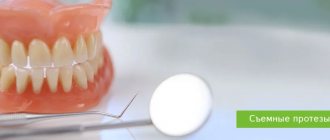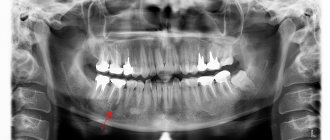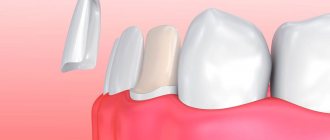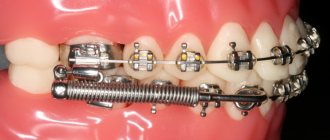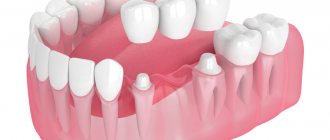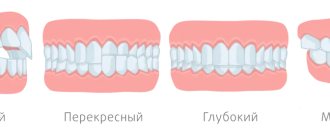If you have a sore throat, a stuffy nose, and a general feeling of malaise, then these are obvious symptoms of a cold. What to do if you have an appointment with the dentist at this time - is it possible to treat teeth if you have a cold? It is impossible to answer this question unequivocally, since most often it is better to postpone a dental appointment until recovery.
Modern dental treatment
Dental treatment of teeth is a set of measures aimed at eliminating the inflammatory process and restoring chewing functions. The most common disease is, of course, caries and its complications. The timing of dental treatment directly depends on the stage of development of the disease. Thus, installing a dental crown or implanting several teeth will take different times, depending on the number of specialist appointments. It is worth noting that regular preventive examinations allow you to notice pathologies at an early stage, allowing for dental treatment without extraction and significantly simplifying it.
If a patient comes to the clinic with acute pain, the task becomes much more complicated. Therefore, every dentist will tell you that the best dental treatment is prevention.
Photos before and after dental treatment
Photos Before and After treatment of chewing teeth.
Photos Before and After treatment of front teeth.
How to make a tooth if there is no root? The third solution is dental implantation
Dental implantation is considered the most reliable way to “insert teeth”. The implant (pin) acts as an artificial root onto which the crown is fixed.
Modern dental implants have a high survival rate (from different manufacturers the figures fluctuate around 98-99%) and a long service life.
Dentures (crowns or bridges) will last 15-20 years, and a high-quality dental implant installed by good specialists will last a lifetime.
The advantages of this solution:
- complete restoration of the tooth, both from a functional and aesthetic point of view;
- the implant will provide load on the bone - the gums will not “decrease”;
- implantation can be carried out both in the case of a single missing tooth and in cases of complete edentia;
- there are solutions for restoring a full dentition (All-on-4, All-on-6, Trefoil from Nobel Biocare);
- in case of indications for single-stage implantation, the crown is placed on the day of installation of the artificial root;
Flaws
Every place has its own nuances, and if there is no root, the tooth is “needed” and you decide to install an implant, you need to know about the disadvantages:
- the operation is expensive and it is necessary to budget for not only the cost of the implant, but also the cost of the crown;
- if a one-stage operation protocol is not available, then after installing the implant, before installing the crown, you must wait three months until the process of osseointegration (fusion of the root with the patient’s bone) is completed;
- The postoperative period may cause discomfort for 3 or even 5 days.
Endodontic dental treatment
What is endodontic dental treatment? This is a procedure aimed at treating root canals, usually using a microscope. If you ignore the symptoms of caries for a long time, pulpitis, periodontitis and other complications develop. Endodontic treatment of teeth under a microscope will help eliminate acute pain and relieve inflammation. The help of an endodontist is indispensable when there is a suspicion of a dental cyst or granuloma. Often, after canal treatment, complications arise due to poor quality treatment or stuck pieces of broken instruments. In such difficult cases, they also resort to endodontic treatment of the tooth canal under a microscope.
Who is eligible to receive
A quota for free dental prosthetics is primarily provided to heroes, disabled people and war veterans, as well as children with disabilities - these patients receive the service ahead of others.
However, patients with oncology or those who have recently undergone a complex operation on the gastrointestinal tract, as well as people faced with the problem of missing teeth due to serious injuries to the maxillofacial apparatus, can also be served out of turn. Naturally, such patients must confirm their status with relevant documents, extracts and doctor’s prescriptions.
Old-age pensioners, people with disabilities and labor veterans can receive benefits on a first-come, first-served basis.
Treatment without drilling
Dental treatment without drilling involves the use of minimally invasive procedures. Some of them have been mentioned above. In particular, lasers are actively used to eliminate caries. This type of dental treatment is performed for adults and children. Among the main advantages is a reduced risk of any infection, since contact of equipment with organs and tissues of the oral cavity is eliminated.
Also, dental treatment without a drill can be performed using the chemical-mechanical method. A special preparation is applied to the area of the tooth affected by caries. It contains sodium hypochlorite and amino acids. Next, the specialist treats the affected area using special tools. Since only dead tissue is removed, the filling occupies a much smaller area, and it is also possible to preserve healthy areas as much as possible.
Another interesting technique was developed by German specialists. It is based on the bactericidal properties of ozone and is often used in pediatric dentistry. The gas used to treat teeth completely destroys microorganisms that cause caries.
The latest non-invasive methods
Before dental treatment, a specialist determines the degree of destruction of enamel, hard tooth tissue and dentin. In advanced cases, a granuloma forms around the root, which may subsequently increase in size. Modern methods of dental treatment make it possible to successfully combat the first signs of caries without the use of a drill. Among them:
- laser dental treatment;
- application of chemical-mechanical techniques;
- fluoridation – treatment of teeth with calcium;
- application of the air-kinetic method;
- ozone therapy.
Treatment of a tooth under a crown
After some time has passed after the installation of the prosthesis, subsidence of the gums and exposure of the neck of the tooth are often observed. All this contributes to the development of caries, and therefore pulpitis, periodontitis and other unpleasant diseases can appear even when the tooth is covered with a crown. Only a specialist can identify the problem and treat the tooth under the crown. If a disease is detected, the structure may need to be removed.
It is also the cause of problems - errors in the manufacture of the prosthesis: if the crown does not fit tightly around the neck of the tooth, bacteria can get under it. The specialist immediately removes such structures and carries out dental treatment. The crowns will subsequently be replaced, which will preserve the teeth and prevent the development of more serious diseases.
An electric toothbrush cleans better than a regular toothbrush.
Not true
I call these brushes brushes for the lazy. If you have an electric brush with a spinning head, I suggest throwing it away. She is not able to clean plaque. There is not enough power to rotate the head enough times. The trajectory of movement of such brushes only contributes to the fact that plaque ends up in the interdental space. If your electric toothbrush has a head that looks like a regular one, you can safely use this one. But still, it cannot be said that it cleans better than usual. They work the same way.
Anesthesia
Conventional local anesthesia is performed very often today. Patients with increased sensitivity of soft tissues and children can first be given topical anesthesia. Also in dentistry, painkillers are used for dental treatment. The type of drug and its dosage are selected individually - it all depends on both the patient’s health condition and the clinical situation. For example, pediatric dentists often treat teeth with nitrogen. Laughing gas causes a feeling of mild euphoria and is not hazardous to health. The patient relaxes, and the doctor can calmly perform all the necessary manipulations. But general anesthesia in dentistry is used only in the most extreme cases.
Anesthesia after dental treatment can last up to 3 – 4 hours. Everything here is very individual and depends on how much anesthetic was used.
Features of treatment of anterior teeth
Treatment of anterior teeth is associated with some difficulties. A characteristic feature of the incisors is their smaller size compared to other teeth. The work that a dentist has to do is truly jewelry. Only an experienced specialist can achieve a high degree of aesthetics.
In the process of treating and restoring the shape of a diseased tooth, a filling can be performed using light-curing polymer materials or veneers. Their shade is selected taking into account the color of the enamel of the patient’s healthy teeth.
The last resort is the installation of crowns. This method is justified only if the tooth is severely damaged. Treatment of lower teeth in the frontal zone is performed using similar methods and techniques.
Reason to see a doctor: symptoms that cannot be ignored
If a tooth hurts, treatment should never be delayed. Any delay is fraught with serious problems not only for the oral cavity, but also for the whole body. The sooner the source of infection is identified, the easier and faster dental treatment can be performed in the clinic. Symptoms that indicate serious problems:
- acute throbbing pain in the tooth;
- significant increase in sensitivity;
- bad breath during regular hygiene;
- bleeding and swelling of the gums;
- tooth mobility;
- difficulty opening the mouth;
- the appearance of a defect on a tooth, an area with uneven edges and pigmentation.
Implantation: indications and benefits
Implantation is the most advanced dental technique that allows you to insert a tooth in place of an extracted one.
- Implants eliminate dental defects of any location and extent.
- People quickly get used to the implants. There is no discomfort, no sensation of the presence of a foreign body in the oral cavity, no problems with chewing food.
- Before implantation, there is no need to grind and depulp adjacent teeth; they remain healthy.
- Implants do not need to be changed or adjusted. With proper implantation and personal hygiene, artificial roots can last a lifetime.
- Even under increased loads, there is no risk of implants falling out or loosening.
Stages of dental treatment
Despite the fact that modern methods involve virtually painless dental treatment, fillings and other procedures, many patients appear in the doctor’s office with acute pain and a whole “bouquet” of oral diseases. Treatment usually includes the following steps:
Diagnostics
A specialist examines the oral cavity, identifies problems and draws up a treatment plan. Additional examinations may be ordered. At the same stage, the doctor conducting the consultation discusses the cost of services with the patient and selects the most convenient time for an appointment.
Professional oral hygiene
It is advisable to begin dental treatment only after their surface is cleaned of hard and soft deposits.
Treatment
The process of treating caries involves removing the affected tissue. The procedure is performed using local anesthesia, and the treated area is isolated from the rest of the mouth. Rubber dam or cotton swabs can be used for these purposes.
Seals
Filling is carried out after cleaning the carious cavity. The final procedure is grinding the filling - this is necessary to eliminate the occurrence of discomfort during the process of chewing food.
Why does a tooth hurt after treatment and what to do in this case?
Aching pain after treatment occurs quite often. However, its causes may be different, which means that the doctor’s actions to eliminate it are required different. Let's look at the most popular:
- Very often, after treatment, the tooth reacts to mechanical stress when chewing food. As a rule, minor pain appears after treatment of deep caries. This is due to the fact that the filling puts pressure on the pulp. Over time, the pain will pass.
- It is not uncommon for a tooth to ache after treatment and due to an individual reaction to the doctor’s intervention. The pain may persist for several days.
- Acute pain after dental treatment cannot be ignored. You must immediately contact a specialist. Unpleasant pain may indicate that there is inflammation after dental treatment.
- If you are sensitive to irritants such as hot and cold drinks, sweet or sour foods, then there is a high probability that the overhanging edge of the filling will injure the periodontal tissue in the gum area. This phenomenon leads to tissue inflammation and exposure of the tooth root, which is extremely sensitive to any irritants. Therefore, be sure to contact the dental clinic if your tooth aches after recent manipulations. The treatment was most likely carried out poorly.
Why is this necessary?
A reasonable question arises: why should private clinics treat teeth under the compulsory medical insurance policy if clients come to them with real money?
Firstly, it is convenient for the owners of such establishments. It is known that the more clients, the higher the profit. Therefore, if the state has undertaken to pay for the patient’s treatment, then why not accept as many people as possible. In any case, the money for treatment will go to the clinic’s account.
Benefits, demand, prospects: is it worth working as a jeweler in Russia and what is the salary?
Teacher career in Germany: how much can you earn in this position?
The head of the ONF “For the Rights of Borrowers” suggested how to conduct a dialogue with a debt collector
Secondly, it is convenient for ordinary citizens. Private clinics are often more trustworthy. And, as a rule, there are no huge queues there.
How much does dental treatment cost in Moscow?
Taking into account the fact that therapy involves an integrated approach, the total cost of dental services will consist of the costs of individual procedures. Approximate prices for dental treatment in Moscow are presented in the table below.
| Type of service | Price |
| Specialist consultation | from 500 rubles, but most often it is free |
| Professional hygiene of the entire oral cavity | from 3,000 rubles |
| Treatment of pulpitis (depending on the number of channels) | from 4,000 rubles |
| Filling using light-curing polymer material | from 3,000 rubles |
| Aesthetic restoration of anterior teeth | from 5,000 rubles |



